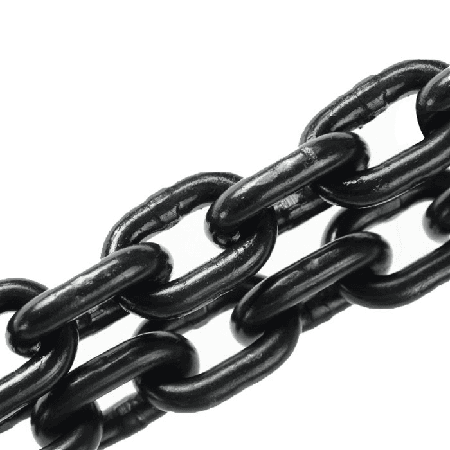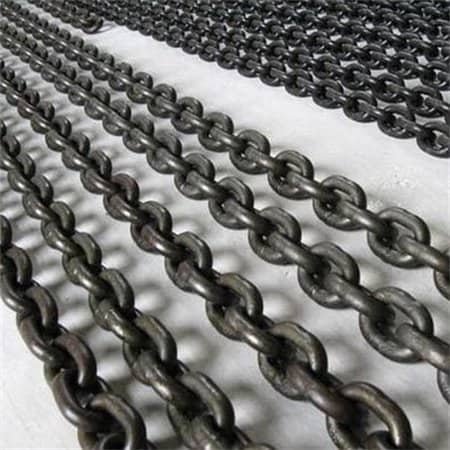A complete summary of common pain points and solutions for hand chain hoists
- A complete summary of common pain points and solutions for hand chain hoists
- Question 1: What Capacity Hand Chain Hoist Should I Choose?
- Question 2: What Should I Do If the Hand Chain Hoist Won’t Pull?
- Question 3: Does a Hand Chain Hoist Need Lubrication? What Kind of Oil Should I Use?
- Question 4: How Often Should a Hand Chain Hoist Be Serviced?
- Question 5: Can a Hand Chain Hoist Be Customized?
- Conclusion
As a widely used manual lifting tool in factories, warehouses, construction sites, and more, the hand chain hoist is favored for its simple structure, portability, and ease of operation. However, in real-world use, many users often encounter a range of issues—such as “How do I choose the right model?”, “Why is it hard to pull?”, or “Are there any safety concerns?”
In this article, we’ll address the most common pain points related to hand chain hoists, covering model selection, operation, troubleshooting, safety precautions, and maintenance. For each problem, we’ll provide clear, practical solutions to help you make informed purchasing decisions and use the equipment safely and efficiently.
Question 1: What Capacity Hand Chain Hoist Should I Choose?
To choose the right capacity for a hand chain hoist, you need to consider the maximum weight of the load you plan to lift and allow for a safety margin.

1. Choose Based on Load Weight
- Lifting ≤ 1 ton: A 1-ton or 1.5-ton hoist is sufficient.
- Lifting around 1.5 tons: It’s safer to use a 2-ton hoist to avoid working at the hoist’s limit.
- Lifting over 2 tons: Choose a model with a capacity 10–20% higher than your load.
2. Consider Work Frequency and Environment
- Frequent operations (e.g., daily loading/unloading): Choose a slightly higher-rated hoist.
- Outdoor or harsh environments: Select a more robust model and consider anti-rust or dustproof features.
- Tight spaces or overhead lifting: Use compact or low-headroom models for better maneuverability.
3. Never Exceed the Rated Load
Each hand chain hoist has a clearly marked rated capacity, and exceeding it can cause chain breakage, brake failure, and serious accidents. Always:
- Know your load weight
- Select a hoist with rated capacity ≥ load weight
- If unsure, choose a larger model as a precaution
Question 2: What Should I Do If the Hand Chain Hoist Won’t Pull?
If your hand chain hoist won’t pull, it typically indicates a mechanical issue or improper operation. Here’s a step-by-step checklist to help identify and fix the problem:
1. Check for Overloading
- Overloading is one of the most common causes. If the load exceeds the hoist’s rated capacity, the chain will become stuck or extremely hard to pull.
- ✅ Solution: Confirm the weight of the load and ensure it’s within the hoist’s capacity. If necessary, use a higher-capacity hoist.
2. Inspect the Hand Chain for Jams or Knots
- The hand chain may be tangled, rusted, or caught in the wheel, making it difficult or impossible to operate.
- ✅ Solution: Check if the chain moves smoothly. Lubricate it or replace it if necessary.
3. Check the Brake System for Seizing
- If the internal brake is stuck due to dust, moisture, or lack of lubrication, the hoist won’t function properly.
- ✅ Solution: Open the hoist casing and inspect the brake components. Clean and lubricate them as needed to ensure smooth operation.
4. Confirm the Pulling Direction
- Hand chain hoists are designed to operate in a specific pulling direction. Pulling in the wrong direction may lock the mechanism.
- ✅ Solution: Make sure you are pulling in the correct direction, according to the hoist’s “up/down” markings.
5. Check for Load Chain Obstruction
- If the load chain is tangled, wrapped around the load, or the hook is caught, it may prevent the hoist from operating.
- ✅ Solution: Ensure the load chain has a clear, vertical path and is not obstructed or twisted.
6. Look for Rust or Internal Jamming
- A hoist that hasn’t been used in a while may have internal rust or dry gears, causing it to seize up.
- ✅ Solution: Disassemble and perform maintenance, or contact a qualified technician. In severe cases, parts or the entire hoist may need replacing.
Never force the chain if it won’t move. Forcing it may cause serious damage or injury. Instead, identify the root cause and resolve it safely.
Question 3: Does a Hand Chain Hoist Need Lubrication? What Kind of Oil Should I Use?
Yes, a hand chain hoist requires regular lubrication, especially in key components like the gears, bearings, brake system, and load/hand chains. Proper lubrication reduces wear, prevents rust and sticking, and ensures smooth, efficient operation.
1. Which Parts Need Lubrication?
- Gear system: Internal gears need oil to prevent dry friction and wear.
- Bearings: Lubrication minimizes friction and increases performance.
- Brake mechanism: Light lubrication for moving brake parts (but never on the brake pads).
- Hand & load chains: Regular oiling prevents rust and keeps the chain moving freely, especially in humid or outdoor environments.
2. What Type of Lubricant Should I Use?
It’s recommended to use industrial-grade grease or gear oil.
Avoid using overly thin oils, as they can leak or attract too much dust. Do not use acidic or corrosive oils, which can damage the components.
3. How Often Should I Lubricate?
- Regular use: Inspect and lubricate every 1–3 months depending on workload.
- Heavy-duty or harsh environments: Check monthly and maintain optimal lubrication.
- Before and after long-term storage: Apply oil to prevent rust; check again before use.
Question 4: How Often Should a Hand Chain Hoist Be Serviced?
The service interval for a hand chain hoist depends on factors such as usage frequency, working conditions, and the general condition of the hoist. Regular servicing is crucial to ensure smooth operation, extend its lifespan, and prevent safety hazards due to potential failures.
1. Regular Service Intervals
- Normal usage: It’s recommended to conduct a full inspection every 6 months, focusing on the gears, brake system, chains, and lubrication.
- Frequent or harsh environment usage: For hoists that are used frequently or in extreme conditions (humid, dusty, or high/low temperatures), service the hoist every 3 months.
- Infrequent usage or long-term storage: Even if the hoist is used rarely, perform an inspection at least once every year, especially for lubrication, brake systems, and chains.
2. Key Areas to Inspect During Servicing
When servicing the hoist, focus on the following components:
- Gears and bearings: Check for wear and jamming, and ensure smooth operation of the gears and bearings.
- Brake system: Ensure the brake pads are not excessively worn and that the braking mechanism works properly.
- Chains and hooks: Check the chains for rust, wear, or breakage. Inspect hooks for any damage.
- Lubrication: Confirm there is enough lubrication and top it up if necessary.
- Visual inspection: Check for cracks, deformation, or other visible damage to the hoist body.
Question 5: Can a Hand Chain Hoist Be Customized?
Yes, hand chain hoists can be customized according to specific operational requirements. Customization allows the hoist to perform optimally in special working conditions and meet unique application needs in various industries.
Conclusion
As a reliable and widely used lifting tool, the hand chain hoist plays a vital role across many industrial applications. By understanding its common issues and knowing how to use and maintain it properly, you can ensure safe and efficient operation. If you have further inquiries or need professional assistance, feel free to contact us — we’re here to help.


